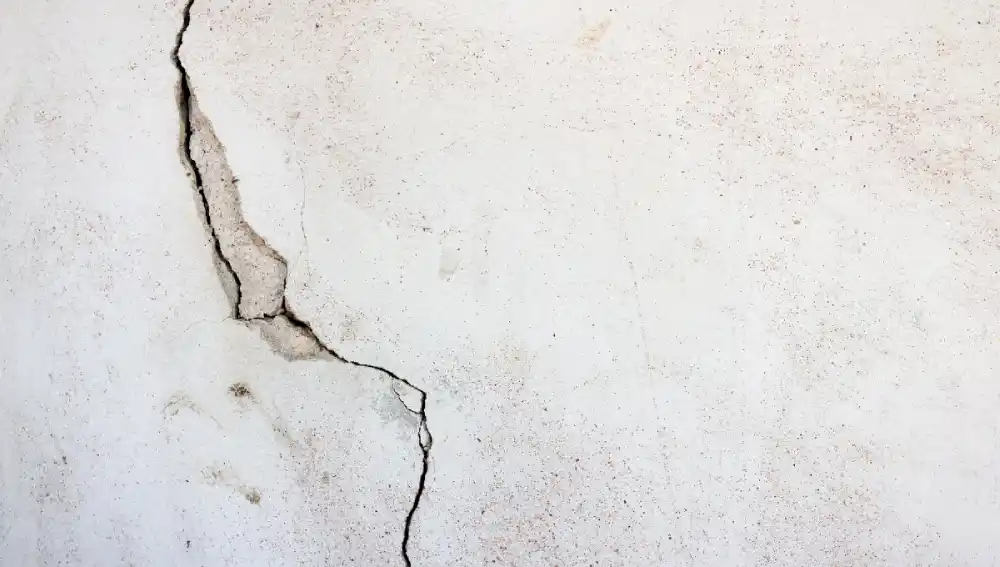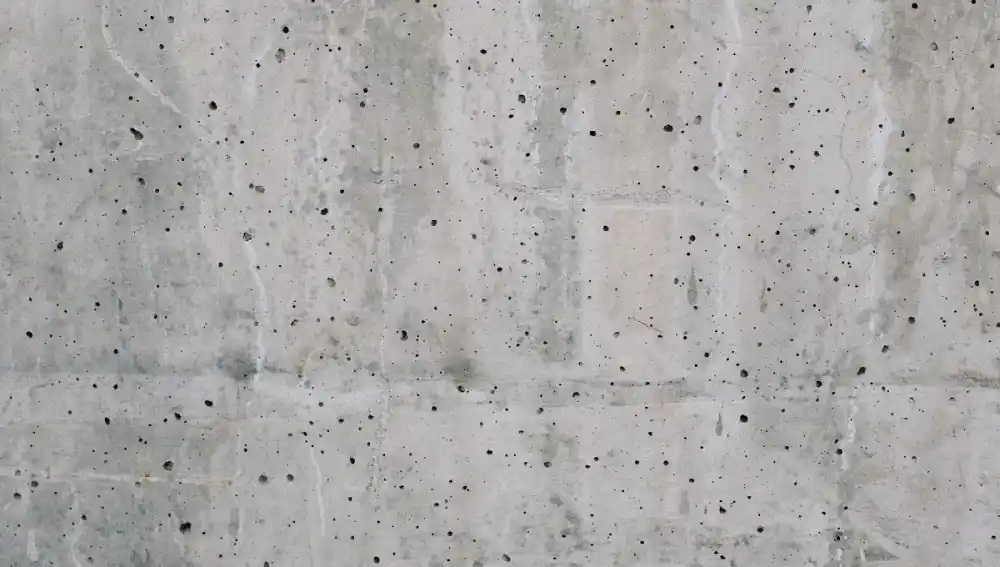Cracks in walls are a common issue faced by homeowners. Filling these cracks is crucial. It keeps your home strong and pretty. This guide will show how to fill cracks in various wall types. Also, it will explain why it is important to fix these problems quickly.
How to Fill Cracks in All Types of Walls?

Different wall types require distinct repair techniques. Here’s a detailed look at how to fill cracks in drywall, concrete walls, and plaster walls.
Repairing a Crack in Drywall
Drywall/ gypsum board is a common material in modern construction. It is used for interior walls. Here’s how to repair cracks in drywall:
Clean the Crack:
Use a utility knife or scraper to remove loose material from the crack. It ensures that the surface is ready for the filler. Wipe the area with a damp cloth to remove dust and debris.
Tip: Be careful not to enlarge the crack unnecessarily.
Apply Joint Compound:
Using a putty knife, apply a layer of joint compound (also known as drywall mud) into the crack. Spread it evenly to ensure it fills the entire crack. Use wall putty to even out your walls before painting, hiding cracks, holes
Tip: Use a flexible putty knife to get a smooth finish for best results.
Insert Drywall Tape:
Place a piece of drywall tape over the crack while the joint compound is still wet. Press it down gently to adhere to the compound and smooth out any bubbles or wrinkles.
Tip: Use mesh tape for larger cracks, as it provides better reinforcement.
Apply Additional Layers:
Allow the first layer to dry completely. Apply subsequent layers of joint compound over the tape, feathering the edges to blend with the surrounding wall. Sand each layer smooth before applying the next.
Tip: Patience is key. Apply thin layers and allow each to dry thoroughly to avoid bulging.
Prime and Paint:
Apply a primer to the repaired area once the final layer is dry and smooth. After the primer dries, paint the area to match the rest of the wall.
Tip: Use the same type of paint (e.g., matte, satin) as the rest of the wall for a uniform finish.
Repairing a Crack in the Concrete Wall

Concrete walls are strong and durable but can develop cracks over time due to various factors. Here’s how to repair them:
Clean the Crack:
Use a wire brush to clean out the crack and remove any loose concrete. Wash the area with water to remove dust and let it dry.
Tip: Use a vacuum to remove dust and debris from inside the crack for deeper cracks.
Apply Concrete Patch:
Mix the concrete patching compound according to the manufacturer’s instructions. Use a trowel to fill the crack with the compound, pressing it in to ensure it fills.
Tip: For large cracks, you may need to apply the compound in layers, allowing each layer to set before adding the next.
Smooth the Surface:
Smooth the surface of the patch with the trowel. Feather the edges to blend the patch with the surrounding concrete.
Tip: Use a damp sponge to smooth the surface for a cleaner finish.
Cure the Patch:
Allow the patch to cure per the instructions, typically for a few days. Keep the area moist during the curing process to prevent the patch from quickly drying and cracking again.
Tip: Cover the patch with a plastic sheet to retain moisture during curing.
Seal the Patch:
Once cured, apply a concrete sealant to protect the patch and prevent future cracking.
Tip: Use a sealant suitable for exterior or interior use, depending on the location of the repair.
Repairing a Crack in Plaster Wall
Plaster walls, often found in older homes, require a specific approach for repair. Here’s how to fix all types of cracks in plaster walls:
Clean the Crack:
Use a utility knife to widen the crack slightly to create a V-shaped groove. This helps the filler adhere better. Remove any loose plaster and dust.
Tip: Be gentle to avoid causing further damage to the surrounding plaster.
Apply Plaster Filler:
Use a putty knife to fill the crack with plaster filler. Press it firmly into the groove and smooth it out.
Tip: For deeper cracks, apply the filler in layers, allowing each layer to dry before adding the next.
Apply Reinforcement Tape:
Place a piece of mesh tape over the crack while the filler is still wet. Smooth it out to remove any air bubbles.
Tip: Mesh tape provides better adhesion and support than paper tape.
Apply Additional Layers:
After the filler dries, apply additional layers of plaster over the tape. Sand each layer smooth before applying the next.
Tip: Use fine-grit sandpaper for a smoother finish.
Finish and Paint:
Sand the final layer smooth. Apply primer and then paint to match the surrounding wall.
Tip: Use a paintbrush for small areas and a roller for larger sections to ensure even coverage.
Why is Crack Filling Important?
Filling cracks in walls is crucial for several reasons:
Structural Integrity:
Cracks weaken walls. They cause more damage over time. Small cracks can develop into larger issues if not addressed promptly.
For example, a small crack in a concrete wall can grow if not fixed. It happens because of moisture. It can eventually make the wall unstable.
Preventing Water Damage:
Unfilled cracks can allow moisture to seep into the walls, causing water damage and promoting mold growth. Moisture can weaken wall materials and lead to health hazards.
For example, water seeping through cracks can damage interior walls in humid or rainy areas. This damage leads to costly repairs.
Aesthetic Appeal:
Cracks need to be more light and can detract from the appearance of your home. Filling cracks keeps your walls looking good. It makes your home look well-maintained.
For example, smooth, crack-free walls make your living spaces beautiful. Whether it’s a freshly painted living room or a clean exterior is true.
Energy Efficiency:
Cracks can cause drafts and heat loss. It reduces your home’s energy efficiency. Filling cracks helps maintain a consistent indoor temperature and reduces energy bills.
For example, In winter, cracks in walls can let in cold air. It makes your heating system work harder and raises your energy costs.
Property Value:
Explanation: Well-maintained walls help preserve the value of your property. Potential buyers or renters care more about a property that looks sound and looks good.
For example, visible cracks can be a red flag for buyers when selling a home. They might lower the property’s value.
Causes for Cracks in Wall
Understanding the causes of wall cracks can help prevent and maintain your walls.
Moisture and Water Damage
Water can leak from pipes, drain poorly, or be too humid. It can make the wall’s materials expand and contract, causing cracks.
Elastic Deformation
Materials like concrete and plaster can deform elastically under stress. Temperature changes and load variations can cause expansion and contraction, resulting in cracks.
Creep
Creep is the slow, continuous deformation of materials under constant stress. Over time, Creeps in concrete will lead to cracks.
Chemical Reactions
Chemical reactions happen in the wall materials. For example, rust forms in steel reinforcements. This reaction can cause the materials to expand and crack.
Foundation Movement & Soil Settlement
Movement in the foundation or settling soil beneath the building can cause big shifts and cracks in the walls. It is common in areas with poor soil conditions or inadequate foundation support.
Growth of Vegetation
Roots from nearby trees and shrubs can grow into the foundation and walls, exerting pressure and causing cracks. It’s essential to manage vegetation growth near buildings to prevent such damage.
Conclusion
Filling cracks in your walls is essential. It maintains the safety, appearance, and value of your home. You can understand the methods for fixing cracks in different wall types and their causes. This knowledge will help you protect your property. Follow the recommended procedures. It will ensure a lasting and effective repair. Ensuring your walls are crack-free will enhance the look of your home and contribute to its longevity and overall comfort.

